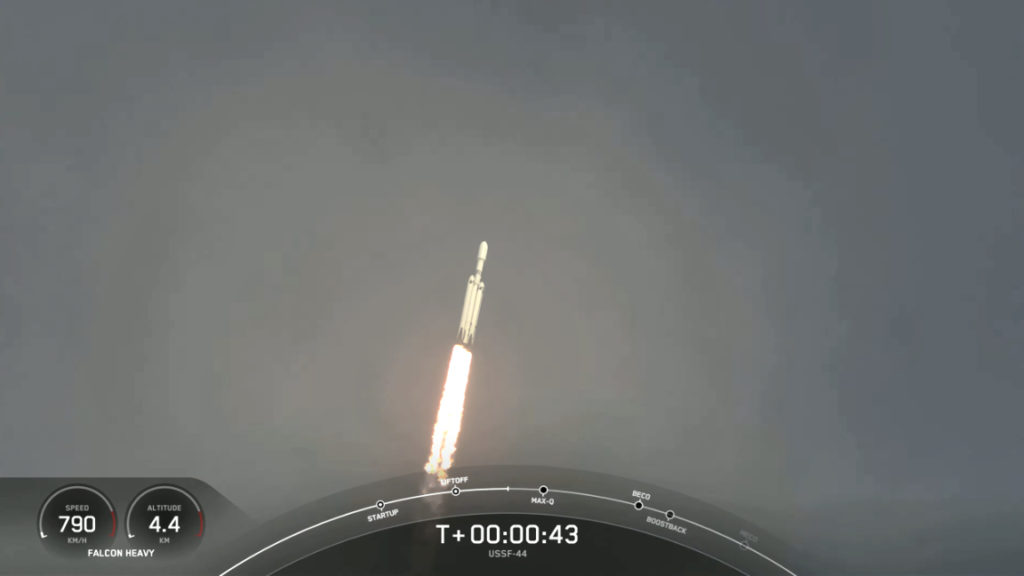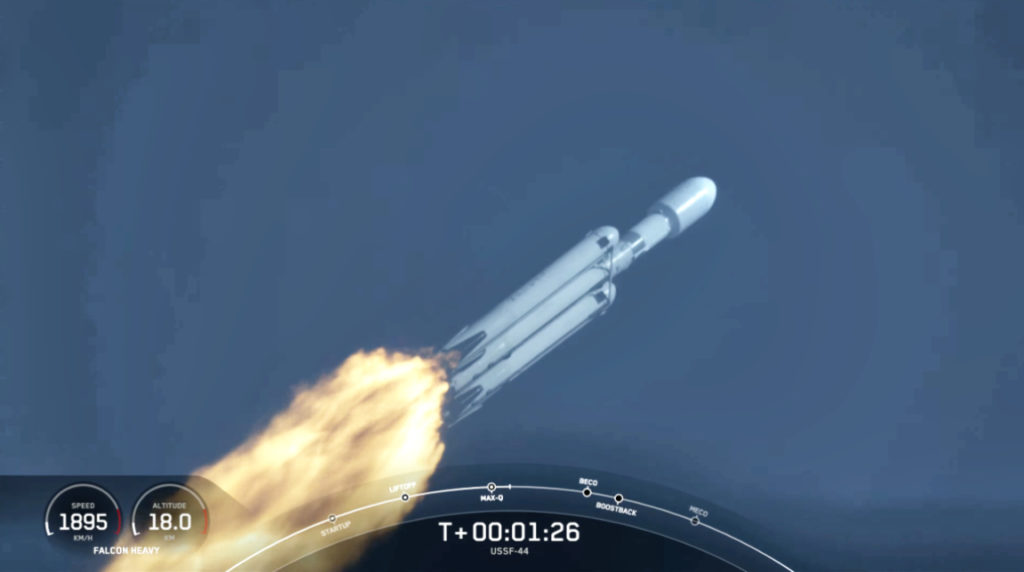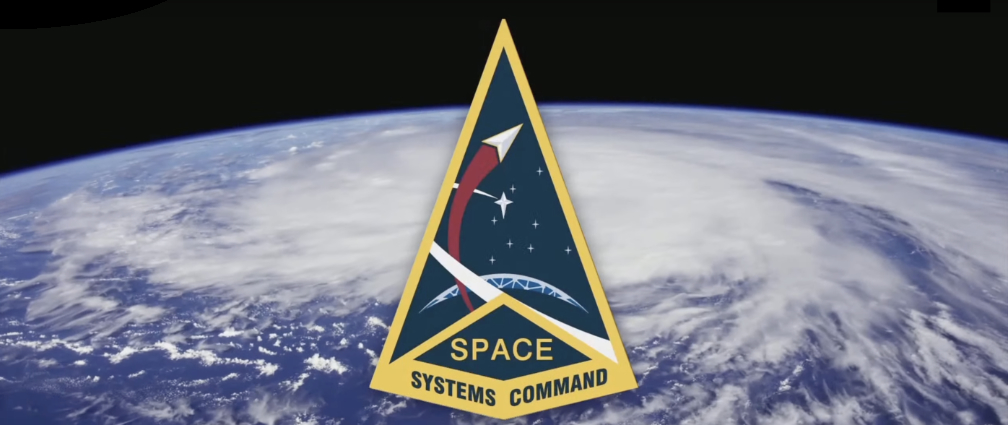
Space Systems Command‘s U.S. Space Force (USSF)-44 integrated payload, which contains the Long Duration Propulsive EELV (Evolved Expendable Launch Vehicle) Secondary Payload Adapter (LDPE)-2 space vehicle, have been successfully launched by a SpaceX Falcon Heavy launch vehicle.

This event is SpaceX’s first Falcon Heavy committed to use for a National Security Space Launch (NSSL) mission.
The mission was initiated in a layer of fog from Vandenberg Space Force Base and all proceeded as planned, including the Falcon Heavy’s side boosters landing at Landing Zone 1 and 2 at Cape Canaveral.
This portion of the event revealed the side boosters descent through the fog and the nearly simultaneous, successful landing at Landing Zones 1 and 2 at Cape Canaveral Space Force Station.

As this was a national security mission, the SpaceX streaming of the event was ended after the landing of the boosters for security reasons.
(All imagery is courtesy of SpaceX via screen captures of the company’s streaming webcast of the USSF-14 launch.)

The LDPE platform is a standardized satellite bus that can host multiple payloads, including separable spacecraft to leverage available mass margin on NSSL missions. The design is modular and employs standard interfaces that minimize non-recurring engineering work required to integrate new payloads. This approach makes rideshare more affordable for a wide range of small and secondary payloads and takes several steps to accelerating the USSF’s pivot to new, more resilient space architectures.
The Enterprise Enabler Development Branch, within the Innovation and Prototype Acquisition Delta manages the LDPE program. This is the second of three missions for the LDPE program. LDPE-1 launched aboard the STP-3 mission on December 7, 2021, and LDPE-3A is scheduled to launch with the USSF-67 mission in January of 2023.
With mating completed, the team will perform final electrical and functional testing as an integrated stack and put the space vehicles in their final physical flight configuration in preparation for roll to the launch pad. The USSF-44 mission launched from Space Launch Complex (SLC)- 39A at Kennedy Space Center, Florida.

“The LDPE-2 platform allows the USSF to cost-effectively prototype new elements of future space architectures before making major investments across the enterprise,” said Brig. Gen. Tim Sejba, SSC’s Program Executive Officer for Space Domain Awareness and Combat Power. “This capability has broad potential to fill capability gaps in our space systems architecture and provide helpful services for our mission partners with frequent and low-cost access to orbit.”

Space Systems Command is the U.S. Space Force field command responsible for rapidly developing, acquiring, equipping, fielding and sustaining lethal and resilient space capabilities. SSC mission capability areas include launch acquisition and operations, communications and positioning, navigation and timing (PNT), space sensing, battle management command, control and communications (BMC3), and space domain awareness & combat power. SSC is headquartered at Los Angeles Air Force Base in El Segundo, Calif.
